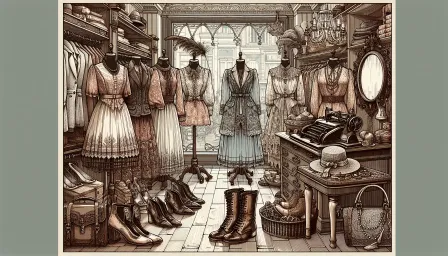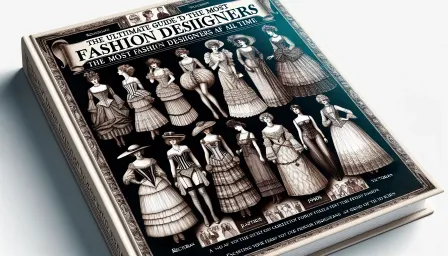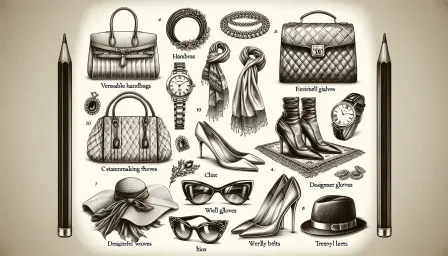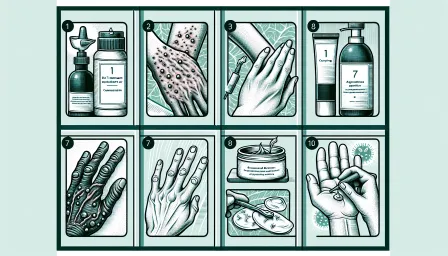The Ultimate Guide to Fashion Models Height: Everything You Need to Know

Discover the essential information about fashion models height, industry standards, and how height influences a model's career. Learn more now!
In the world of fashion, height is often one of the defining characteristics that can make or break a model's career. Whether you're an aspiring model, a fashion enthusiast, or someone curious about the industry standards, understanding the dynamics surrounding fashion models' heights is crucial. This comprehensive guide will delve into all aspects of fashion models' height, providing you with valuable insights and knowledge.
Why Height Matters in Fashion Modeling
Height has always been a significant factor in the fashion industry. The primary reason is that taller models tend to have more elongated bodies, which naturally showcase clothing designs more effectively. When designers create garments, they often envision them on taller frames. As a result, fashion shows and advertising campaigns predominantly feature taller models.
Industry Standards for Female Models
The industry standard for female fashion models typically ranges from 5'9" to 6'0". Models like Gisele Bündchen, Naomi Campbell, and Karlie Kloss fall within this height range. This standard height allows models to meet the aesthetic and practical needs of designers and photographers, ensuring that the clothes fit and appear as intended.
Industry Standards for Male Models
Male models usually need to be between 6'0" and 6'3". This height range helps maintain proportionality with female models and ensures that male models also meet the creative visions of designers. Models such as David Gandy and Sean O'Pry exemplify this standard, consistently working within this height range.
Height Requirements Across Different Modeling Niches
While the previously mentioned height standards are generally applicable to high fashion and runway modeling, other niches within the modeling industry have different requirements.
Commercial Modeling
Commercial modeling, which includes work in print ads, catalogues, and television commercials, tends to be more lenient with height requirements. Female commercial models can range from 5'5" to 5'9", while male commercial models can be anywhere from 5'9" to 6'2". The focus in commercial modeling is more on relatable, everyday looks rather than the towering statuesque figures of high fashion.
Plus-Size Modeling
Plus-size modeling has been growing in popularity, promoting body positivity and diversity. Height requirements for plus-size models often remain similar to those of traditional fashion models, with female models ranging from 5'9" and above, and male models from 6'0" and above. Notable plus-size models like Ashley Graham have helped reshape the industry's standards.
Petite Modeling
Petite models generally fall under the category of models who are below the industry standard height, typically under 5'7" for female models. There is a niche market for petite models in areas such as fitness, parts modeling, and catalogues. Agencies like IMG Models have divisions specifically for petite models, recognizing that beauty comes in all sizes.
The Impact of Height on a Model's Career
For many aspiring models, height can be a double-edged sword. While being tall can open doors to certain opportunities, it can also limit prospects in areas like commercial modeling or niche markets that prefer shorter models.
Advantages of Being Tall
Taller models often have the advantage of being hired for high fashion runways and designer campaigns, where height is a critical criterion. This exposure can lead to lucrative contracts, international fame, and a more diverse portfolio of work.
Challenges for Taller Models
On the flip side, taller models might find it challenging to break into markets that prefer more relatable heights. They may also face difficulties in roles that require a wide range of motion and flexibility, as taller individuals might find certain poses or movements more challenging.
Shorter Models and Breaking Stereotypes
Although shorter models face an uphill battle in traditional high fashion modeling, many have successfully carved out niche careers. For instance, Kate Moss, standing at 5'7", defied conventional norms and became one of the most iconic supermodels of all time. Shorter models are proving that determination, unique looks, and the ability to connect with audiences can surpass height expectations.
How to Succeed in Fashion Modeling Regardless of Height
While height is undeniably important, it's crucial to remember that other factors contribute significantly to a successful modeling career. Here are some tips for aspiring models:
Emphasize Your Unique Features
Every model has something unique to offer. It might be your striking eyes, distinctive bone structure, or your ability to express emotions through your poses. Embrace what makes you stand out and use it to your advantage.
Build a Strong Portfolio
Your portfolio is your visual resume. Invest time in getting high-quality photos that showcase your versatility. Collaborate with experienced photographers, makeup artists, and stylists to build a diverse and compelling portfolio.
Network and Seek Representation
Building relationships within the industry is crucial. Attend fashion events, join modeling agencies, and connect with other professionals. A reputable agency can offer guidance, help you find opportunities, and negotiate contracts on your behalf.
Stay Fit and Maintain a Healthy Lifestyle
Modeling is a physically demanding profession, so it's important to stay in shape and maintain a healthy lifestyle. Regular exercise, a balanced diet, and adequate rest can improve your overall appearance and energy levels, making you more appealing to potential clients and agencies.
Conclusion
In conclusion, while height is a significant factor in the fashion modeling industry, it is not the sole determinant of success. Understanding the varying height requirements across different modeling niches can help aspiring models navigate their career paths more effectively. With dedication, perseverance, and the right strategy, models of all heights can find success and make their mark in the fashion world.



























